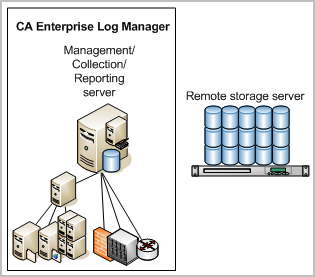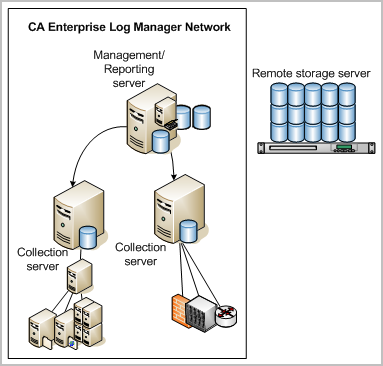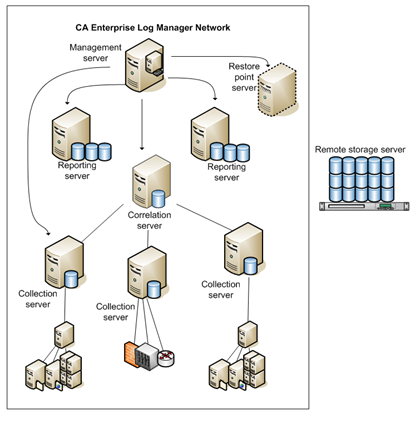The simplest CA Enterprise Log Manager architecture is a single-server system, where one CA Enterprise Log Manager server performs all roles:
Note: A non-CA Enterprise Log Manager remote server stores archived event log databases.
This setup is appropriate for processing a low event volume and few scheduled reports, as in a test system.

The next simplest architecture is a multi-server system where the first CA Enterprise Log Manager installed performs most roles:
Note: A non-CA Enterprise Log Manager remote server is set up to store archived databases of event logs.
This architecture is suitable for a network with moderate event volume. The arrows depict that the management functionality of the Management/Reporting server maintains the global settings that apply to all servers. When there are many collection servers, this architecture is termed "hub and spoke."

In a large network with high event volume, many complex scheduled reports and alerts, and ongoing customization, you can dedicate one or more CA Enterprise Log Manager servers to single roles:
Note: A non-CA Enterprise Log Manager remote server is set up to store archived databases of event logs.
This setup is ideal for very large networks. The arrows depict that the Management server maintains the global settings that apply to all servers.

| Copyright © 2011 CA. All rights reserved. | Email CA Technologies about this topic |